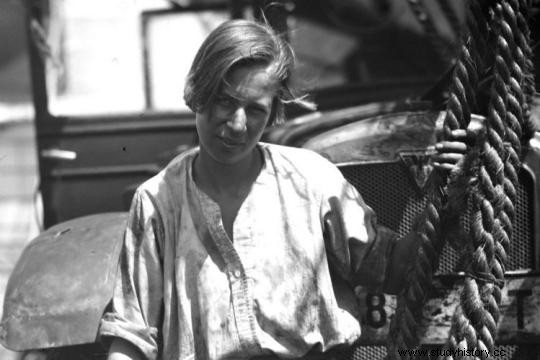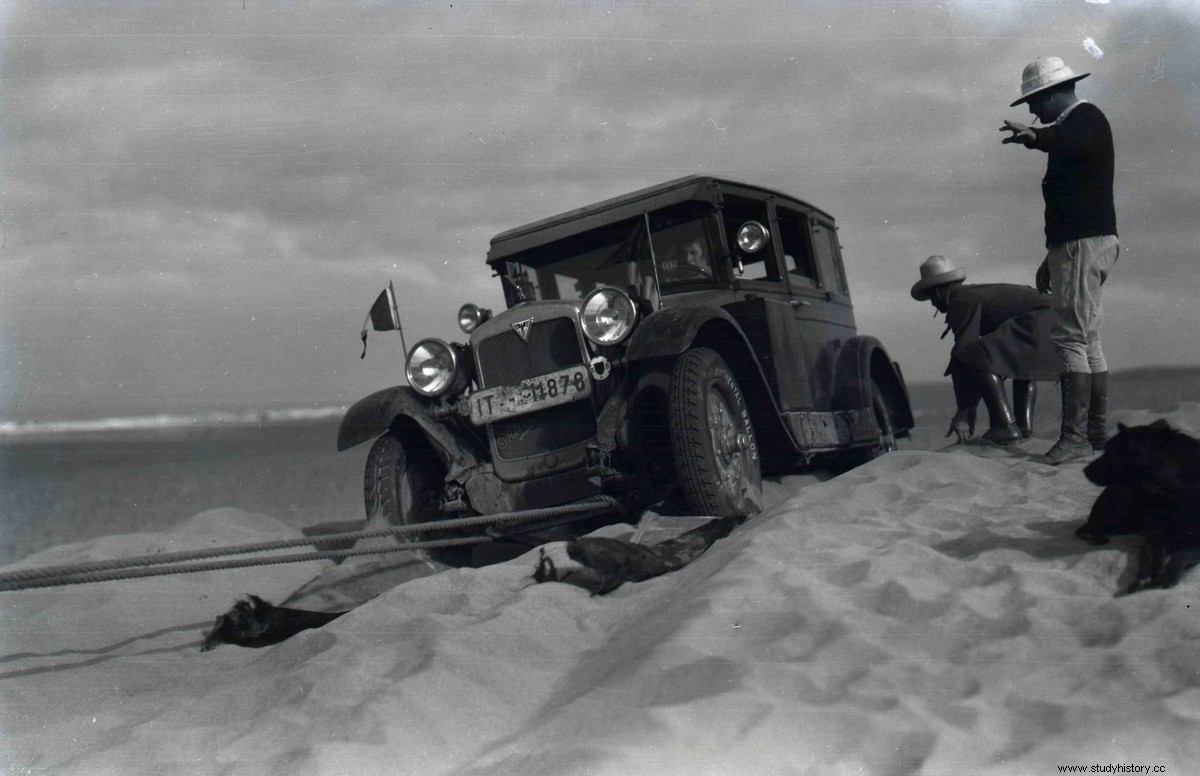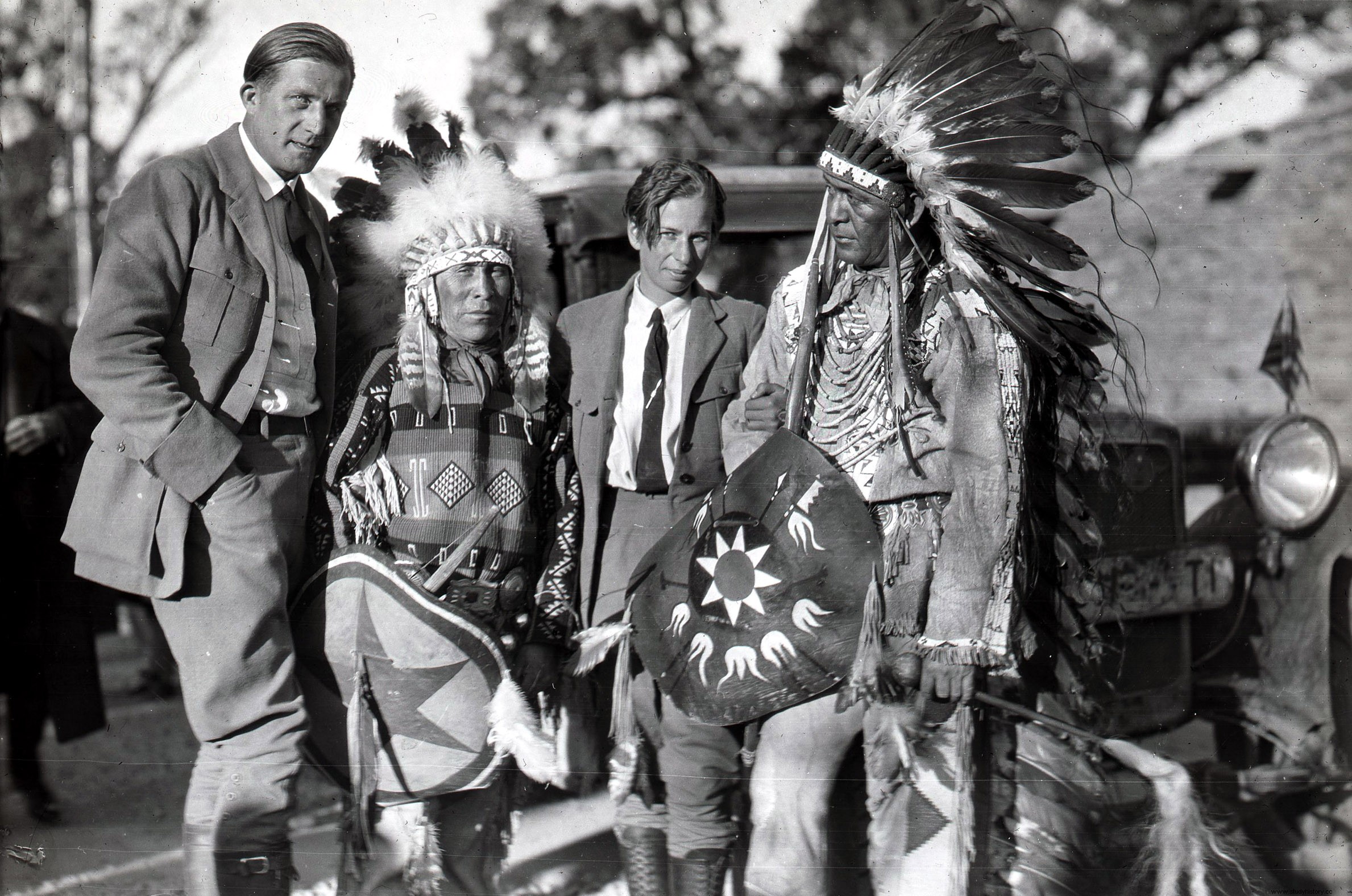Passionate and adventurous racing driver, Clärenore Stinnes (1901 – 1990) is, with his cameraman Carl-Axel Söderström, the first person to travel around the world by car, in an incredible journey.
Car racing
 Third of seven children of wealthy industrialist Hugo Stinnes, Clärenore was born on January 21, 1901 in Mülheim an der Ruhr, Germany . An influential politician, his father was at the head of an industrial, mining and manufacturing empire. Clärenore received a solid education and, close to her father, worked for him for some time in his company. Hugo entrusts her with the position of personal secretary, which is then closer to a position of assistant.
Third of seven children of wealthy industrialist Hugo Stinnes, Clärenore was born on January 21, 1901 in Mülheim an der Ruhr, Germany . An influential politician, his father was at the head of an industrial, mining and manufacturing empire. Clärenore received a solid education and, close to her father, worked for him for some time in his company. Hugo entrusts her with the position of personal secretary, which is then closer to a position of assistant.
Passionate about cars, Clärenore started racing at the age of 24. Two years later, she has already won seventeen competitions and has become one of the most prominent drivers in Europe. The idea of traveling around the world by car quickly came to mind. The feat has never been accomplished before, the route requiring crossing many places completely unsuitable for the passage of a car. Determined to complete this world tour in less than a year, Clärenore, then barely 26 years old, embarked on a meticulous preparation for her trip, sponsored by several German automobile manufacturers.
The beginning of the adventure
 On May 25, 1927, Clärenore Stinnes hit the road with two mechanics and a cameraman, Carl-Axel Söderström. Young unmarried woman accompanied by three men she hardly knows, she thus upsets the conventions of society and her class. She drives an Adler Standard 6, a fresh-from-the-factory vehicle that didn't go through the dyno. A truck carries the equipment needed for the expedition, including fuel and a large quantity of film to film the different stages of the trip. The small group covers the first 2,000 km to Istanbul in twenty days, before continuing to Beirut, then Moscow and Yekaterinburg. Taking many paths ill-suited to the passage of vehicles, Clärenore however fell behind and arrived in Siberia at the beginning of winter. Many people advise her to wait until spring, but the young woman wants to complete this world tour in the space of a year and refuses this delay. She is then successively left by her two mechanics, and only Carl-Axel remains by her side.
On May 25, 1927, Clärenore Stinnes hit the road with two mechanics and a cameraman, Carl-Axel Söderström. Young unmarried woman accompanied by three men she hardly knows, she thus upsets the conventions of society and her class. She drives an Adler Standard 6, a fresh-from-the-factory vehicle that didn't go through the dyno. A truck carries the equipment needed for the expedition, including fuel and a large quantity of film to film the different stages of the trip. The small group covers the first 2,000 km to Istanbul in twenty days, before continuing to Beirut, then Moscow and Yekaterinburg. Taking many paths ill-suited to the passage of vehicles, Clärenore however fell behind and arrived in Siberia at the beginning of winter. Many people advise her to wait until spring, but the young woman wants to complete this world tour in the space of a year and refuses this delay. She is then successively left by her two mechanics, and only Carl-Axel remains by her side.
The obstacles and dangers of travel
Clärenore Stinnes and Carl-Axel continue their crossing of Siberia in the middle of winter, crossing the partially frozen Lake Baikal by car. As they drive on the ice for tens of kilometers, creaks regularly reach them but they continue and reach the other side. New dangers await them later in the Gobi Desert, between China and Mongolia. As bandits pursue them, the truck carrying fuel and highly flammable film catches fire. Clärenore and Carl-Axel manage to stop, put out the incipient fire, and drive away before their pursuers catch up with them.
 After reaching Japan and climbing Mount Fuji, the two explorers crossed the Pacific, arriving in Lima in Peru. From there, they have to cross the Andes and face many dangers in this high mountain range of 4,000 meters above sea level on average. There are no roads, and Clärenore and Carl-Axel sometimes have to blast their way through with dynamite. Trapped in rocks and short of water, they have to walk fifty kilometers in the middle of the desert to get help and push vehicles where they cannot go. The two travelers finally reach Valparaiso and embark there for Los Angeles. In the United States, they are welcomed as heroes and tour the country and visit Ford factories. They are welcomed by Henry Ford, and by President Herbert Hoover himself.
After reaching Japan and climbing Mount Fuji, the two explorers crossed the Pacific, arriving in Lima in Peru. From there, they have to cross the Andes and face many dangers in this high mountain range of 4,000 meters above sea level on average. There are no roads, and Clärenore and Carl-Axel sometimes have to blast their way through with dynamite. Trapped in rocks and short of water, they have to walk fifty kilometers in the middle of the desert to get help and push vehicles where they cannot go. The two travelers finally reach Valparaiso and embark there for Los Angeles. In the United States, they are welcomed as heroes and tour the country and visit Ford factories. They are welcomed by Henry Ford, and by President Herbert Hoover himself.
Life after the feat
After crossing the Atlantic, they are joined in France by Marta, Carl-Axel's wife, for the last leg. They arrived in Berlin in 1928, two years after their departure, having driven 47,000 km. Subsequently, they spent more than a year editing a film with the many images shot by Carl-Axel during the trip. The pilot and the cameraman had inevitably become closer during the trip, Marta ended up filing for divorce and Carl-Axel and Clärenore got married. Afterwards, they will live in Sweden and have three children.
Gradually, the feat of Clärenore and Carl-Axel, who had been acclaimed as heroes, fell into oblivion. In an interview given at the end of her life, Clärenore declares that her adventure was forgotten because she is a woman.
Clärenore Stinnes died on December 7, 1990 in Sweden.
